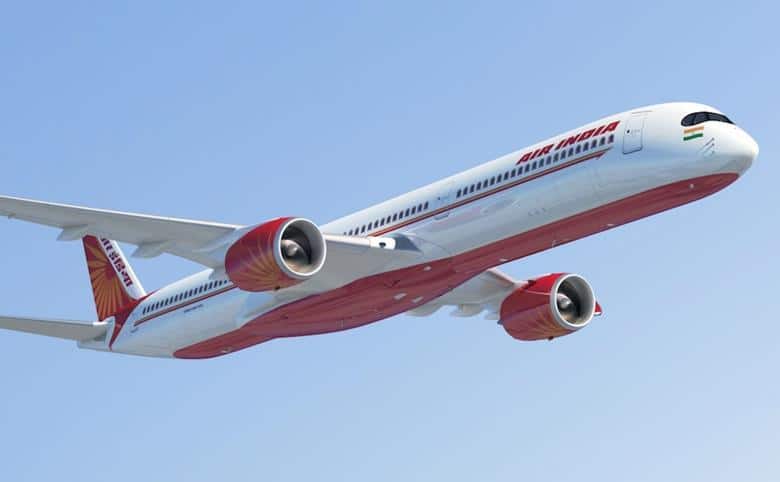Aerospace
The A350 aircraft owned by Aeroflot could be delivered to Air India.

Six Airbus A350-900 planes that were manufactured for the Russian carrier Aeroflot may be delivered to Air India. The aircraft has left the final assembly line. According to Twitter user @ArenaJet.
As part of a historic order for the aviation sector’s future expansion, AirIndia. Long-range and medium-range aircraft are sought after by airlines. Six A350-900s and 34 A350-1000s have also been bought in addition to the Boeing 777x aircraft.
Due to current western sanctions against Russia, all Airbus items are unavailable. Now, some of the Airbus A350S that are currently lying around the Airbus plant is also included in that. In addition, Airbus saw some negative effects on A350 sales as a result of conflicts with Qatar Airways over the paint job. The problem with Qatar Airways has been rectified, though, since its confirmed stability and support airlines began exhibiting interest in it.
[adinserter block="2"]
The Russian carrier initially purchased 22 A350-900s, but as Western sanctions grew more severe, Airbus was unable to actually deliver the aircraft. The seat arrangements for these Air India Airbus A350-900s, which were previously planned for Aeroflot, are currently unknown.
According to the source, Turkish may also acquire the set A350 aircraft by May of this year, which is also in a similar arrangement. The delivery slots are now reserved and prepared for the second half of this year. The A350s taken back by Turkish also have a two-class deck configuration for 329 passengers: 32 in business class in a 1-2-1 configuration and 297 in economy class in a 3-3-3 configuration.
[adinserter block="3"]
Also, this marks the start of the next phase of the airline’s fleet renewal initiatives and the revitalization of the overall brand in the global arena. However, for the time being, all eyes are focused on Air India to see which routes would be served by these Airbus A350s.
In the coming years, Air India is anticipated to compare its services to its new, youthful fleet while providing satisfying travel for its patrons. The businesses of Airbus and Boeing are working hard to get this aircraft built.

Aerospace
Boeing Transfers Rocket Stage to NASA, Paving Way for Human Moon Mission

Boeing has achieved a significant milestone by providing NASA with the second core stage of the Space Launch System (SLS) rocket.
This crucial component, crafted at NASA’s Michoud Assembly Facility (MAF), is set to propel the Artemis II crew into lunar orbit, marking humanity’s return to deep space after a 50-year hiatus.
The monumental Boeing-built rocket stage, the largest element of the Artemis II mission, will embark on a journey aboard the Pegasus barge, traveling 900 miles to NASA’s Kennedy Space Center.
Comparison of two legendary aircraft B777x vs B747 aircraft:Click here
Upon arrival, it will be meticulously integrated with other essential Artemis II components, including the upper stage, solid rocket boosters, and NASA’s Orion spacecraft within the iconic Vehicle Assembly Building. This intricate integration process is a vital step toward the eagerly anticipated Artemis II launch, slated for 2025.
“Boeing-built products helped land humankind on the moon in 1969, and we’re proud to continue that legacy through the Artemis generation,” remarked Dave Dutcher, vice president and program manager for Boeing’s SLS program. “Together, with NASA and our industry partners and suppliers, we are building the world’s most capable rocket and paving the way to deep space through America’s rocket factory in New Orleans.”
NASA, Lockheed Martin Reveal X-59 Quiet Supersonic Aircraft:Click here
The delivery of Core Stage 2 marks a significant achievement in the evolution of the SLS rocket. Towering over 200 feet and powered by four RS-25 engines, this core stage, coupled with two solid-fueled booster rockets, will generate a staggering 8.8 million pounds of thrust. This immense power is crucial to launching Artemis II and future missions into the vast expanse of space.
The SLS rocket stands unparalleled in its capability to transport both crew and substantial cargo to the moon and beyond in a single launch. Its extraordinary capacity will facilitate the delivery of human-rated spacecraft, habitats, and scientific missions to destinations including the moon and Mars, ushering in a new era of space exploration.
-

 Travel1 week ago
Travel1 week agoAir India to Expand US Operations with Three New Routes After a Decade
-

 Travel2 weeks ago
Travel2 weeks agoWhy We Should Avoid These Stamps in a Passport
-

 Airlines1 month ago
Airlines1 month agoInvestigations Reveal Fake Chinese Titanium in Boeing and Airbus Jets
-

 Tech4 weeks ago
Tech4 weeks agoChina’s CATL Plans 1,800-Mile Electric Plane Launch by 2027
-

 Airport3 days ago
Airport3 days agoTop 10 Largest Airports in the World by Size
-

 Aerospace4 weeks ago
Aerospace4 weeks agoChina’s Fighter Jets Turn Wings into Autonomous Drones
-

 Airlines4 days ago
Airlines4 days agoAir India Rolls Out A350s for Delhi-New York JFK and Newark Routes
-

 Defence3 weeks ago
Defence3 weeks agoBoeing Enhances Chinook with New Engines and Block II Upgrades at $96 Million







